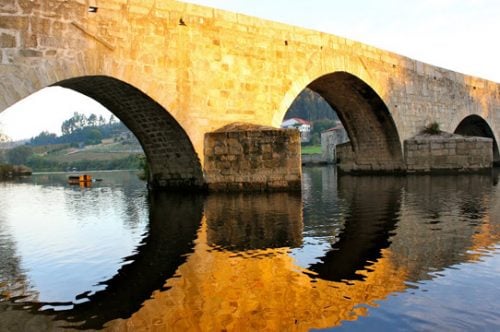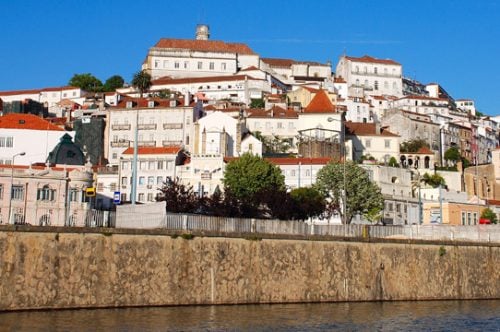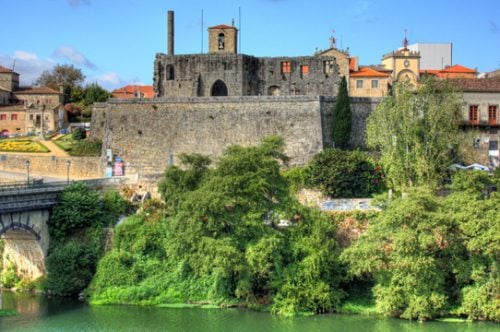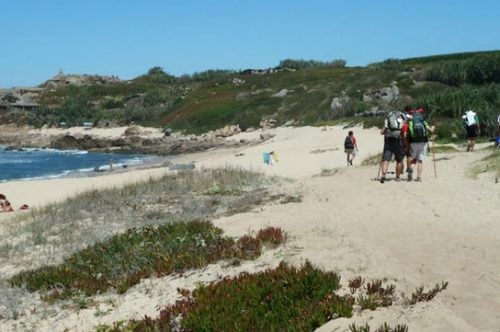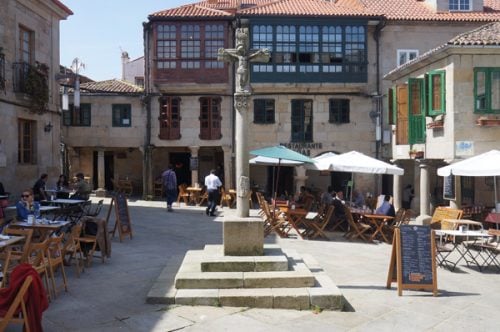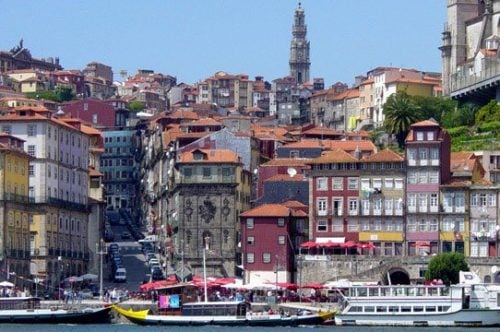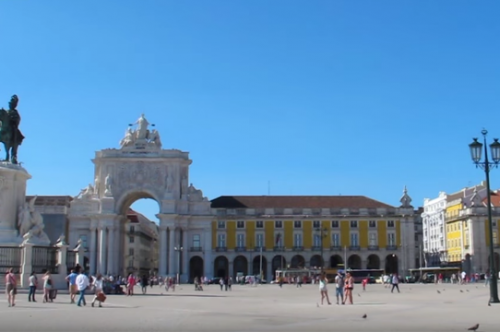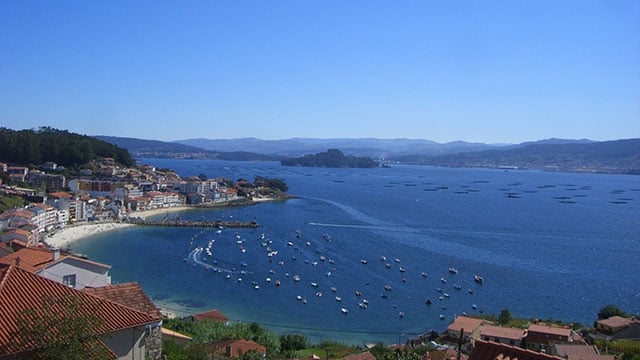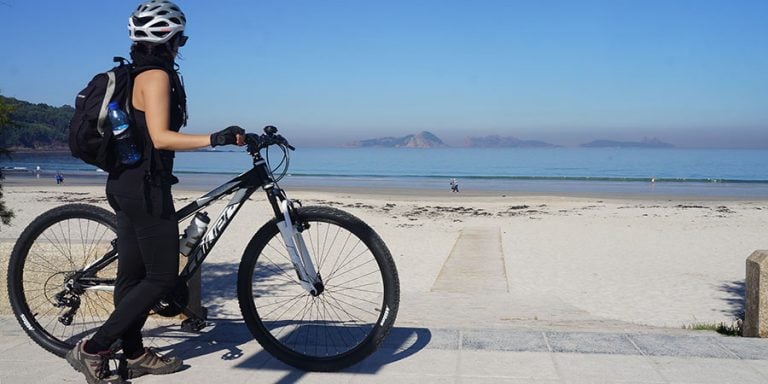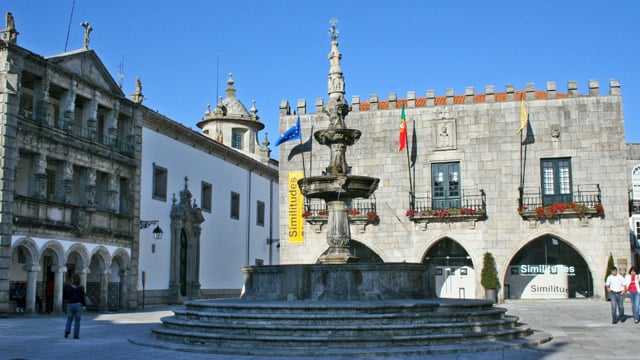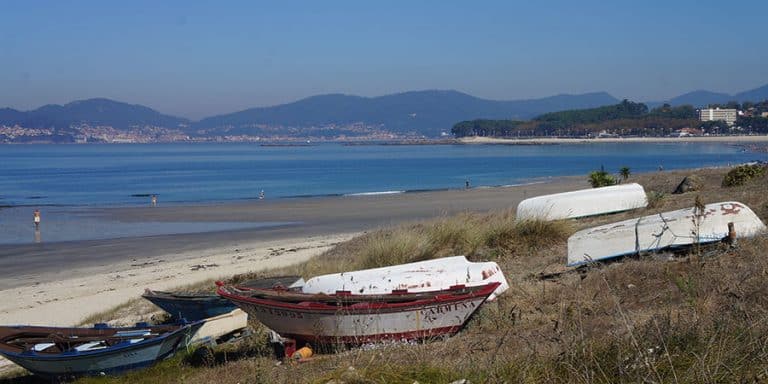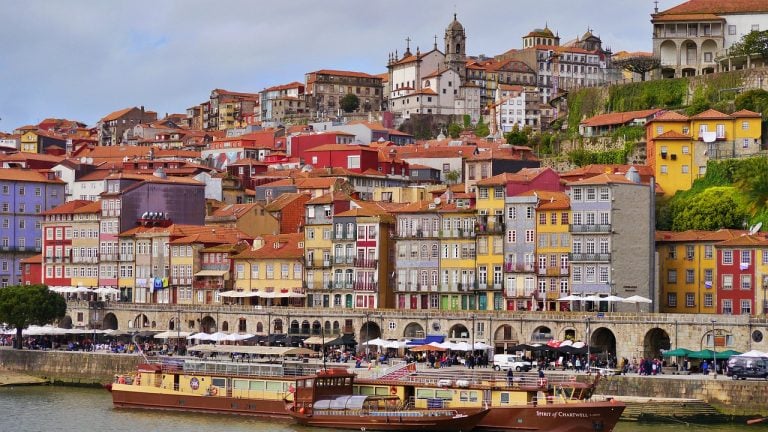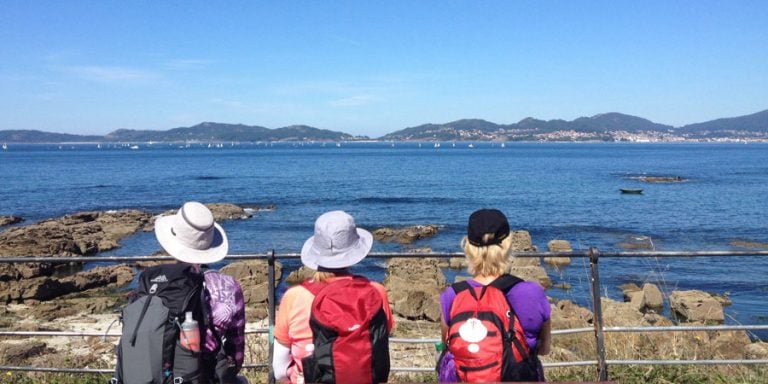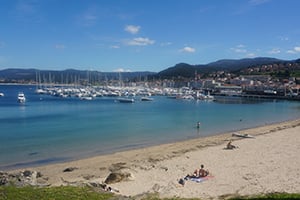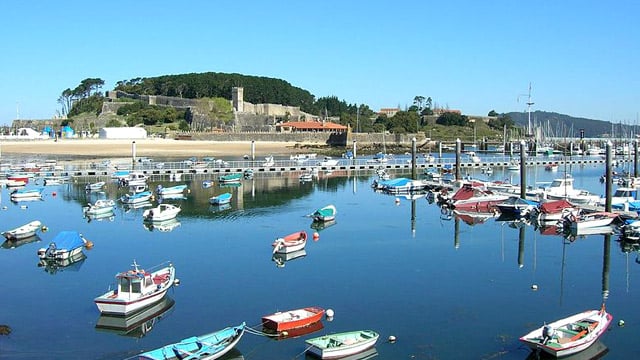The Camino Portugues
What draws people to walk from Portugal into Spain, following a path shaped by monarchs, monks, tradespeople, and pilgrims hundreds of years ago? Is it the history, the landscapes, the food, or perhaps the quiet hope that a long walk might bring clarity? The Camino Portugués has a way of stirring these questions, inviting you to notice more than you expected as you move north towards Santiago de Compostela.
Spanning the length of Portugal from Lisbon to the border with Galicia, this Camino is a meeting point of old traditions and everyday life.
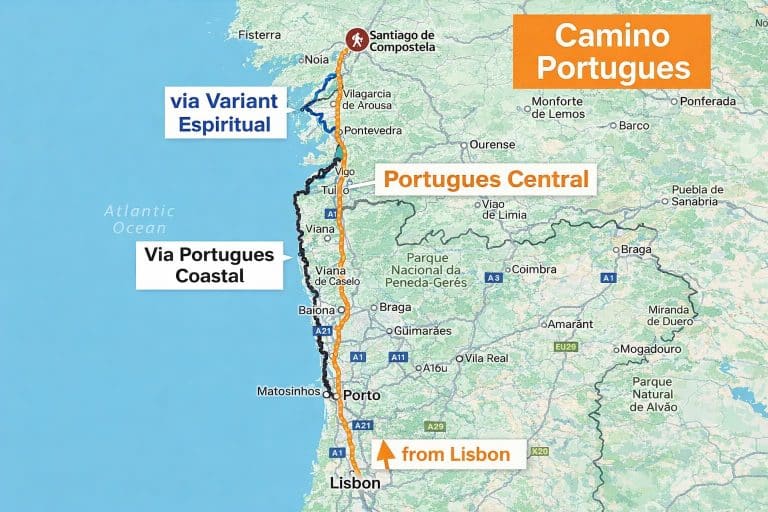
You walk through farmland, river valleys, fishing villages, and lively cities, always with the sense that countless others have made this same journey before you. Yet every pilgrim’s Camino is different. Some chase the ocean breeze, others prefer inland countryside, and some are drawn to the myths surrounding Saint James himself.
Today, the Camino Portugués is made up of three main variants: the Coastal Route, the Central Route, and the Variante Espiritual. Each shares the same beginning in Lisbon and the same destination at Santiago’s cathedral, but their personalities differ in ways that surprise even experienced walkers. This parent page introduces all three, helping you understand their similarities, differences, and the small details that might guide your choice.
Why the Camino Portugués Captures the Imagination
People often describe this Camino as calmer than the Camino Francés, but is “quieter” always what one wants? Some are drawn to its gentle pace, slower mornings, and evenings spent in towns near the sea. Others enjoy the steady rhythm of the inland stages, where vineyards, old churches, and long Roman roads blend into each other.
No matter the path, the culture of Portugal tends to shine through: shared meals, warm welcomes, and the easy-going pace that encourages you to slow down. By the time you cross into Spain, many pilgrims notice a shift—the landscapes turn greener, the food changes, and the Galician sense of tradition grows stronger with every kilometre.
Suggested Routes
The Three Variants at a Glance
Although these three routes overlap often, the diversions they take can completely transform the feel of your walk.
1. Camino Portugués Coastal
This version follows the Atlantic from Porto, passing fishing towns, rugged cliffs, wooden boardwalks, and sandy beaches. It is the most “open-air” option, shaped by sea breezes and wide views. It is also the most modernised, with promenade stretches and maritime villages offering a relaxed rhythm. It continues north into Galicia through Vigo before merging with the other routes.
2. Camino Portugués Central
The Central Route is the traditional inland path. It follows old Roman roads and medieval trade routes, winding through vineyards, forests, farmland, and historic towns. From Porto it heads towards Barcelos, Ponte de Lima, then into Spain via Tui. It rejoins the Camino Portuguese Coastal path in Redondela. Many consider it the “classic” Portuguese route.
3. Camino Portugués Variante Espiritual
The Portuguese Variante Espiritual begins like the Central and Coastal routes but takes an entirely different turn after Pontevedra. It leads pilgrims into the coastal hills, towards monasteries, quieter villages, and eventually to the harbour town of Vilanova de Arousa. From here, pilgrims board a boat and travel up the Ría de Arousa, retracing the legendary voyage said to have carried the body of Saint James to Galicia. The Variante later merges back with the other paths near Padrón.
Comparison: How Do the Three Routes Truly Differ?
Looking at a map might suggest these variants are nearly the same, but the experience on foot feels surprisingly different.
The Coastal Route is shaped by openness: open skies, open sea, wider paths, and towns built around maritime life. If you enjoy steady, flat walking and the feeling of being beside the ocean for days on end, it delivers exactly that. Yet one could question whether its more modern sections offer less of that “historic Camino” atmosphere people imagine. Still, it has an undeniable charm—sunlight on the water, fresh sea air, and long promenades that encourage a relaxed pace.
The Central Route is deeply traditional, offering more Roman bridges, historic centres, and rural scenes. It feels older, more grounded in the stories of medieval pilgrims. But with this comes terrain that is hillier in places and busier: more locals, more farmland machinery, more everyday life. For those seeking authenticity over scenery, the Central Route often wins.
The Variante Espiritual is the most unusual. It blends quiet countryside, religious heritage, and a river journey unlike anything on the other Caminos. Some consider it more spiritual; others simply enjoy the novelty of combining walking with a boat trip. Yet its detour does introduce more elevation and remoteness, raising the question: do you prefer the familiar comfort of the Central Route or the curiosity of stepping into something different?
All three share Porto, Pontevedra, and the final approach to Santiago. All three allow that slow shift from Portuguese warmth to Galician hospitality. And all three remind pilgrims that the same ending can come from very different journeys.
Which Variant Is Right for You?
It depends on what you’re hoping to feel.
Do you long for long horizons and the sound of waves?
Do you picture historic bridges, old roads, and vineyard landscapes?
Are you drawn to the idea of a small adventure—mixing walking with a symbolic river crossing?
None of these routes is better than the others; each simply asks you what you want the Camino to mean for you.
Camino Ways Route Planner
For over 1000 years, pilgrims from all over the world have walked the Camino Ways across Europe in their quest for spirituality. Making the pilgrimage to Santiago de Compostela in Spain, they encountered a variety of people, cultures and beliefs, leading to friendship and new experiences. This continues today with the Camino de Santiago being the most well known and well-loved walk in the world. More than just a walk, the Camino de Santiago is an unforgettable and unique journey for the body, mind and soul.
A Camino that Connects Portugal and Galicia
No matter which variant you choose, the Camino Portugués unfolds gently. You’ll pass medieval towns, old shrines, tiny chapels, and local cafés where you stop “just for five minutes” that somehow turn into twenty. You’ll watch the landscape change step by step, and you’ll meet other pilgrims from all over the world who, like you, began with a simple question: Could this walk be good for me?
And by the time the towers of Santiago come into view, most find their answer—not in the grand moments, but in the quiet ones.
What To Bring On The Camino Portugués?
Our Camino packing guide ebook is free to download. This will help you decide what to bring on your Camino.
Services That Make It Easy
When booking with CaminoWays, your journey is smooth and supported:
- Handpicked hotels for rest and comfort.
- Luggage transfers so you can walk light.
- 24/7 assistance and maps provided.
👉 See Guided Tours.
👉 Or browse Self-Guided Tours.
Faqs
Q: What is the Camino Portugués?
A: The Camino Portugués is a historic pilgrimage route that starts in Portugal and leads north to Santiago de Compostela, following paths used for centuries by travellers, traders, and pilgrims.
Q: How far is the Camino Portugués?
A: The full journey from Lisbon to Santiago is roughly 600–640 km, while popular shorter starts include Porto, Tui, Vigo, and Pontevedra.
Q: What are the three main variants of the Camino Portugués?
A: The Camino has a Coastal Route, a Central Route, and the Variante Espiritual, each offering different scenery, towns, and walking experiences.
Q: Do all three variants finish in Santiago?
A: Yes, all three routes merge in Galicia and lead to the Cathedral of Santiago de Compostela, where pilgrims receive the Compostela certificate if they meet the distance requirements.
Q: Which Camino Portugués variant is the most traditional?
A: The Central Route is widely considered the most traditional, as it follows ancient inland paths and Roman roads, though all three have historic sections.
Q: Which variant is the most scenic?
A: Many consider the Coastal Route the most scenic if you enjoy sea views, while others prefer the Variante Espiritual for its mix of countryside, coastline, and the boat journey on the Arousa estuary.
Q: Do I need to carry my own luggage on the Camino Portugués?
A: No, luggage transfers are available on all three variants, so you can walk with only a small daypack.
Q: Can I cycle the Camino Portugués?
A: Yes, cycling is popular, especially from Porto. To earn the Compostela, cyclists must cover at least 200 km.
Q: What is the best time of year to walk the Camino Portugués?
A: Spring and autumn offer the best mix of mild weather and lively towns, though the routes are walkable year-round.
Q: Do I need a pilgrim passport for this Camino?
A: Yes, the pilgrim passport (credencial) is needed to collect stamps along the way and to receive the Compostela in Santiago.
Q: Are the Camino Portugués routes well-marked?
A: Yes, all three variants are clearly waymarked with yellow arrows, though some rural areas may require closer attention.
Q: Is the Camino Portugués suitable for beginners?
A: Yes, many first-time pilgrims choose this route because the terrain is manageable and the towns are welcoming. We also offer special Caminos for families.
History of the Camino Portugués
The history of the Camino Portugués is often presented as straightforward: a medieval route shaped by kings, monasteries, and early pilgrims heading north to honour Saint James. Yet, like most Camino stories, the truth is more layered. The path we follow today grew from many different roads, used not only for devotion but also for trade, travel, diplomacy, and daily life between Portugal and Galicia. In a way, the “Camino” may have emerged less from a single design and more from the natural movement of people across the Iberian Peninsula.
Pilgrimage from Portugal began to flourish after the 12th century, following the country’s independence. Portuguese monarchs encouraged the spiritual connection with Santiago de Compostela, which helped strengthen bonds with neighbouring Galicia and the wider Christian world. Nobles, clergy, merchants, and ordinary villagers all walked these roads for reasons that were not always purely religious. Some travelled for protection from illness, others for trade opportunities, and many combined pilgrimage with visits to family or regional fairs. The Camino was a network long before it was a single route.
These early travellers followed ancient Roman roads, such as the Via XIX, which linked Braga, Tui, and points further north. Bridges from that era still stand today, quietly reminding walkers that this route predates medieval Christianity by many centuries. Over time, monasteries, hospitals, and churches were built along the way to care for travellers. Records from the 13th to 15th centuries mention Portuguese pilgrims staying in Tui, Pontevedra, and Padrón, and even Portuguese ships arriving by sea with pilgrims who preferred coastal landings to inland roads.
By the 16th century, however, pilgrimage began to decline across Europe. Wars, political changes, and the Reformation all contributed to fading interest. The Portuguese routes were no exception. Many sections became simple rural paths once again, used by farmers, traders, and local villagers rather than long-distance pilgrims.
The revival of the Camino Portugués is surprisingly recent. In the late 20th century, associations in Portugal and Galicia began restoring the old paths, waymarking routes, researching historical documents, and reconnecting forgotten segments of the trail. This work continues today, with volunteers often uncovering routes that had disappeared under vegetation or modern roads.
Some might question whether the “modern” Camino truly reflects its medieval origins. Yet many pilgrims say that the continuity lies not in exact geography, but in the experience: walking slowly, meeting strangers, watching the land change, and following a path whose history is still unfolding.
The Camino Portugués may be ancient, but it is also alive, shaped as much by today’s pilgrims as by those who walked before.
👉 Discover more: History of the Camino.
